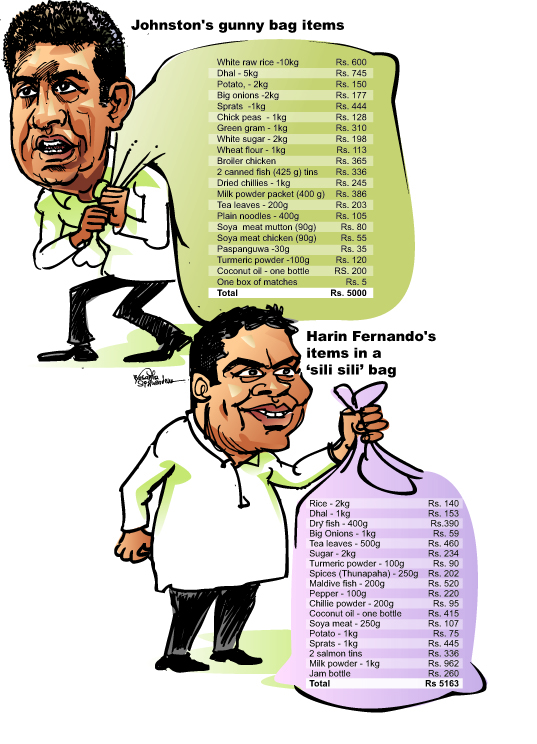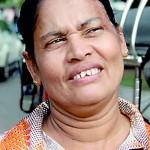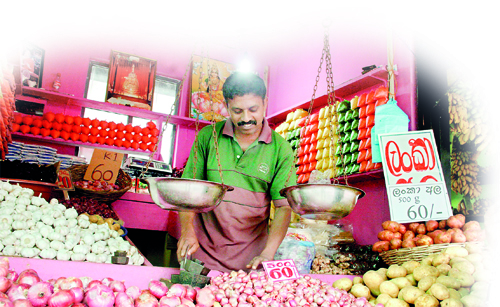News
Silli arguments rage while public struggles with costs
With the skyrocketing cost of living, essential food items have come under scrutiny with parliamentarians going shopping for food items at Lak Sathosa outlets to argue rival cases about the financial pressures facing the public.
Last week, United National Party (UNP) MP Karu Jayasuriya stated at a meeting that essential food items worth Rs. 5,000 could be fitted into a five-rupee “sili sili” polythene bag.
Internal Trade and Cooperatives Minister Johnston Fernando at a press conference came up with a gunny-bag full of goods, asserting that the items had been purchased for Rs. 5,000.
The items purchased from the Lak Sathosa outlet included 10kg of white raw rice, 5kg of dhal, 2kg of potatoes, 3kg of big onions, 1kg of sprats, 1kg each of chickpeas and green gram, 2kg of white sugar, 1kg of wheat flour, 1kg of broiler chicken, two 425g tins of fish, 1kg of dried chillies, one 400g packet of milk powder, 200g of tea leaves, 400g of plain noodles, two packets of soy meat, one box of paspanguwa, 100g of turmeric powder, one bottle of coconut oil and a box of matches, all costing Rs. 5,000.
The Minister challenged the Opposition MP who stated that goods bought for Rs. 5,000 could not fit into a polythene bag.
However, UNP Badulla district MP Harin Fernando came forward with a sili sili bag of essential dry rations in order to defy the minister’s claim.
His bag contained 2kg of rice, 1kg of dhal, 400g of dried fish, 1kg of big onions, 500g of tea leaves, 2kg of sugar, 100g of turmeric powder, 250g spice powder (thunapaha), 200g of Maldive fish, 100g of pepper, 200g of chilli powder, one big bottle of coconut oil, 250g of soya meat, 1kg of potatoes, 1kg of dried sprats, two 425g tins of fish, 1kg of milk powder and a bottle of jam, all costing Rs.5,163 fitted into a five-rupee polythene bag.

Sampath
“International borrowings by the state have led to massive interest payments. This is affecting the cost of living for the urban population and has risen to a point where people are experiencing hardship,” Mr Fernando said.
The Household Income and Expenditure Survey by the Census and Statistics Department for the year 2012/2013 states that the country’s average monthly household expenditure is Rs. 40,887, and in urban areas this goes up to Rs. 59,001, for an average household with four members.
The Western Province is leading, with expenditures with a monthly cost of Rs. 59,117, the Southern Province in second with Rs. 37,452 and the Central and Northern provinces are third and fourth with Rs. 35,940 and Rs. 35,282 respectively.
Of its total, urban families are spending Rs.18,513 on food while Rs. 40,487 is spent on non-food expenses that includes housing, fuel,

Chals Thirimanna
transport, education, communication, education, clothing etc.
According to the Census and Statistics Department, urban Sri Lankan households with four members consume 12kg of rice (kekulu), 7kg of samba rice, 2kg of wheat flour, six pounds of bread, 2kg of dhal, 2kg of potatoes, 2kg of chicken, 400g of meat, about 850g of fresh fish, 450g of dried sprats, 130g of dried katta fish, 15 eggs, 25 coconuts, 500g of chilli powder, 2kg of big onions, 300ml of fresh milk, 1.7kg of milk powder, 4kg of sugar, 400g of sugar each month.
Out of the total non-food expenditure, in the urban sector, the bulk of the money goes for housing, followed by the costs of transport, fuel, health and personal care and education.

Rani Sumithra
Professor Athula Ranasinghe, Dean of the Faculty of Arts of the Colombo University and senior Professor in Economics said excessive public expenditure by the government, especially in the fields of infrastructure such as road networks, was resulting in heavy taxes on essential commodities.
“Construction of road networks have long-term gains but in the short term it can result in price escalations,”

Sujitha Aparakka
he said.
Prof. Ranasinghe said that heavy taxes imposed on imported consumable and essential items could result in price increases for essential goods.
“Most of the imported goods are essential commodities and local substitutes are insufficient to cater the demand,” Professor Ranasinghe said.
He said as prices for essential goods increased, the cost of living would also increase and trigger price increases by service providers.
“Other than wage-earners, other service providers can increase prices and charges at their own will. This is the reason why the working class is feeling the burden,” he said.
The public is hurting from the soaring cost of living. Rani Sumitra, a housewife from Rajagiriya, said that not only food items but also utility bills, children’s education cost and health expenses had gone up.
“Tuition class fees have been increased, citing the cost of living as a reason; this is similar with doctor’s charges at medical centres. There is no relief even from prices for the essential commodities, gas, spices and fresh fish,” she said. Charles Thirimanne, a professional from Nugegoda, said that with the cost of living, the public should opt for a more simple living by cutting down extra costs.
“Many Lankans overseas handle several jobs mainly due to high costs. Our country is also the same and income from one job is not enough,” he said.
Sujatha Aparekka, a mother of two, said that she has opted for buying in small quantities.
“Our country is seeing a lot of infrastructure development. Unfortunately people are still burdened by the amplifying cost of living,” Ms. Aparekka said.
Wasantha Silva, who runs a dry rations shop, said there had been a drastic drop in sales in the past few months.
“There were times people buy items in bulk but now there are only a few customers doing so. Most people are buying in 250g quantities,” he said.


